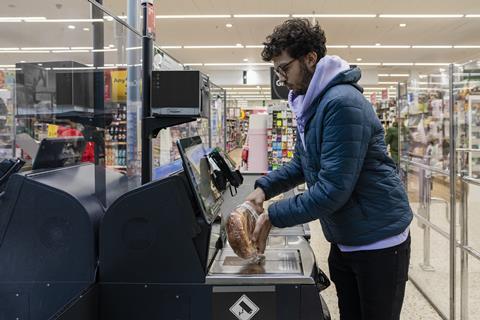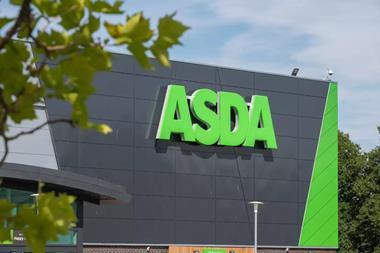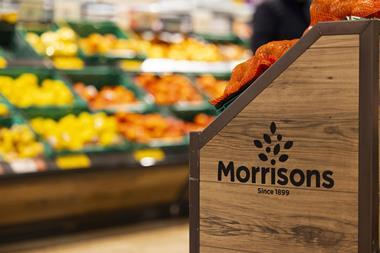Whether it’s social media mobs, a cash-strapped populace, or organised crime gangs, retail theft is on the rise. Stores are fighting back with a combination of new staff training techniques and high-tech solutions
Onlookers screamed, crowds swarmed and police struggled to gain control. These were the scenes on London’s Oxford Street on 9 August, when a co-ordinated social media attack kicked off. Posts encouraged crowds to gather with one aim: to loot as many stores as possible, in as little time as possible.
The ensuing headlines shone a light on the rising tide of retail crime. Armed robberies and shoplifting are increasing across the country: incidents of customer theft have reached eight million a year, costing retailers nearly £1bn in 2021/2022 [BRC]. With the cost of prevention added in, that figure is closer to £2bn.
And this isn’t about customers stealing to eat. Last month, Co-op stressed organised crime was behind the majority of thefts. “Repeat and prolific offenders, and local criminal gangs, are driving brazen and violent theft,” reported operations director Kate Graham.
In the face of this threat, stores are investing in prevention tactics – from simple interventions such as tags, to increasingly high-tech solutions such as facial recognition systems and AI. The aim is to build a store that successfully deters shoplifters and organised thieves – but remains welcoming to customers.
This isn’t a simple task, points out Emmeline Taylor, professor of criminology at City University’s School of Policy & Global Affairs. She led research into the subject in partnership with the ECR Retail Loss group.

Her report, published in May, concluded there was “no one-size-fits-all” solution. It advocated a seven-step plan to build what she calls a ‘fortress store’ – starting out with gathering data on the individual circumstances of the store, and then designing ways to control and monitor that environment, while working in partnership with local law enforcement.
“Against a backdrop of increasing theft, violence and societal issues impacting on retail environments in many countries, businesses are having to take a more proactive approach to risk mitigation,” says Taylor.
How AI could spot theft before it happens
What if you could alert staff to a theft before it even happened? That futuristic – and somewhat terrifying – concept is fast becoming a reality, thanks to AI technology.
These systems use cameras to detect suspicious behaviour, such as shoppers trying to conceal items in their clothing. It is already gaining ground in the US, where tech company Everseen raised $70m to support the rollout of its visual AI platform in May. John Donnelly, chief revenue officer at loss prevention solution specialist DTiQ, says tech like this “can detect high-risk behaviours, spot trends and anomalies” and alert staff. And it could soon be here in the UK, with one security source saying the mults are looking at AI tech.
This proactive approach can simply mean an increase in existing protections. Demand for established deterrents such as product tags has soared, says retail technology company Checkpoint. Having typically applied only to high-value items like fine wine and spirits bottles, they are now making their way onto drinks cans, as well as meat, dairy, cosmetics and laundry .
Checkpoint is also exploring greater use of radio frequency (RFID) tech. It’s trialling it on fresh items such as meat – which are increasingly a target for thieves.
Dummy packaging is another simple method increasing in popularity. Co-op last month extended its trial of dummy display packaging to curb “bulk-shoplifting” by organised gangs.
The problem is, interventions such as these can cause friction for law-abiding shoppers, says Bryan Roberts, global insight leader at IGD. Unless assistants can swap dummy packaging for the real product quickly, it can cause irritation for shoppers or deter them from making a purchase, he explains. The same applies to tags – especially at the self-checkout area. “The more shoppers shift to self-scan, getting tags removed becomes more irksome,” he points out.
It’s a point backed up by retail technology company Zebra, whose latest global shopper study found 76% of shoppers want to get in and out of the self-checkout area as quickly as possible. At the same time the number of shoppers who opt for self-checkouts is rising – half of respondents preferred to shop this way.
“Too often, police forces fail to respond to desperate calls by our store teams”
Matt Hood, Co-op Food MD
This is an issue in itself. Self-checkouts account for as much as 23% of retailers’ unknown store losses, according to a 2022 report by ECR Retail Loss. Understandably, this area has become a focus of increased security measures. Sainsbury’s has introduced exit gates at self-checkouts in some stores, which only open after shoppers feed in their receipt to prove they have paid. Morrisons is understood to be looking at a similar solution.
This introduces yet another element of friction. Catherine Shuttleworth, CEO of shopper marketing agency Savvy, believes most customers understand the need to take these measures. “Most find it a price worth paying,” she says, while conceding that anything that slows down the shopper experience is not ideal. Some interventions – such as bag checks at certain Aldi stores – have also prompted customer complaints.
So other retailers have opted for softer tactics. Waitrose announced in July it was encouraging staff to ‘lovebomb’ shoppers – paying them extra attention, especially at self-checkouts – to deter thieves.

Empowered staff
While this may be tricky in busier stores, it illustrates the importance of store staff in tackling retail crime. Indeed, Taylor named people as one of the seven key tenets of her anti-crime strategy. Although retailers advise staff against direct interventions, Taylor highlights the importance of “meaningful and bespoke training” on issues such as de-escalation tactics and spotting theft. Her report stressed staff “need a reason to believe they can win against thieves and aggressive customers”. It also highlighted the need to give staff equipment, “to enable them to quickly report incidents, communicate, and feel protected”.
That’s where tech comes in. Much of it has focused on surveillance. Co-op, for example, rolled out body-worn cameras in 2020. All frontline staff were issued with cameras that captured real-time audio and visual feeds.
These cameras have spread to other retailers, such as Waitrose. “Not only do they help deter would-be shoplifters and defuse potentially difficult situations, they give us solid evidence to share with local police forces,” the retailer says.
Then there’s more controversial use of facial recognition. At Southern Co-op, the tech scans the faces of customers and identifies whether their biometric data matches that of a known offender. If so, staff are alerted on the system.
While the tech did prompt an investigation – privacy campaigners took Facewatch, the company behind the software, to the Information Commissioner’s Office – it has since been dropped. And although none of the big supermarkets have yet committed to the tech, Facewatch has received a “significant increase in serious enquiries”, says founder Simon Gordon.
Use of retail surveillance looks set to grow, if the US is anything to go by. Retailers there are already using AI technology that detects suspicious behaviour (see left). Many of the big UK supermarkets are understood to be looking into the technology.
But, so far, all these solutions put the onus on retailers – who are already facing soaring costs and unprecedented pressures. Which is why there are growing calls for law enforcement to do more.
Just last week, the ACS launched an online tool to enable convenience retailers to lobby police for greater action. The platform informs retailers who their local police and crime commissioner is, and what their plans and priorities are around retail crime.
Five key target areas for theft – and how retailers are responding
Beer, wines, spirits
Theft in the booze aisle is growing. So retailers are now looking to apply tags – typically reserved for spirits bottles – to more wines and even cans, says Checkpoint. Some are stationing staff members in the booze aisle to deter thieves, says IGD’s Bryan Roberts.
Fresh
Thieves have long targeted fresh items such as beef – and this is now extending to lower-value items such as poultry, says Checkpoint. It’s now trialling the use of radio frequency (RFID) technology on beef, which could curb food waste and theft.
Cosmetics
Heat-shrink sleeves are increasingly being used on items such as lipsticks. The aisle also offers wider lessons, with Checkpoint trialling a system that dispenses one grocery item at a time, similar to cosmetics bays, to stop thieves sweeping shelves.
Household
High-value household items, such as laundry powder, are a common target for thieves. As such, laundry gel and washing powder are among the items in Co-op’s trial of dummy packaging on shelves. Shoppers swap packs for real products at the till.
Self-checkouts
The self-scan area is a hotspot for shrinkage. As such, exit gates that require customers to feed in their receipt – a tactic long used in Europe – are growing in popularity in the UK. They’re already used in Sainsbury’s, and are understood to be on their way in Morrisons.
Waitrose is similarly looking to increase police presence – albeit in a different way. Last month, it began offering officers free hot drinks. The hope is, by having officers on site, it will make thieves think twice.
And getting their buy-in could be hugely valuable. One inside source says retailers are struggling to get police to attend shoplifting incidents, and are frustrated by the lack of penalties.
This frustration came to the fore in an investigation by Co-op last month. An FOI request submitted by the convenience chain revealed an average of 71% of serious retail crimes are not responded to by police. “Co-op has invested significantly in keeping colleagues and stores safe, but we need the police to play their part,” said Matt Hood, Co-op Food managing director, at the time of the announcement. “Too often, forces fail to respond to desperate calls by our store teams.”
That may change if Suella Braverman has her way. The home secretary has said it is unacceptable that crimes such as shoplifting are treated as less important, calling on forces to follow all “reasonable lines of enquiry” in an effort to drive down crime rates.

And there has already been some action on the penalties front, at least. Last month, the government announced plans to hand mandatory prison sentences to repeat shoplifters – and mentioned the use of facial recognition tech in catching culprits. However, many feel this is just skimming the surface.
“Tackling this issue will not be achieved simply by introducing tougher sentences,” says Usdaw general secretary Paddy Lillis.“We need to see better reporting procedures in workplaces, the police taking abuse, threats and violence against retail workers seriously and greater co-ordination between police and employers. We must also address wider societal issues such as the cost of living crisis, addiction and mental health.”
Clearly, incidents such as the TikTok looting of Oxford Street can’t be deterred by retailers alone. Tackling rising crime requires co-operation between all parties. Taylor’s report also highlights the importance of working together with local law enforcement.
However, she is keen to stress retailers aren’t powerless against the rising tide of theft. In her research, she has seen some inspiring examples of store teams that “break the mould” – and urges retailers to assess their approach. “We need to see a shift from reactive security measures to proactive strategies,” she sums up.
And, as her research illustrates, so-called ‘fortress stores’ may soon go from an ideal to a necessity.




















No comments yet